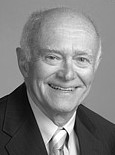-
(b.) - ?1938
Bio/Description
A computer engineer perhaps best known for designing the Data General Nova series of computers, He was born in Plainfield, New Jersey, but his family moved to Newton, Massachusetts when he was six and he attended elementary and high school in the 1940s. He attended Lowell Technological Institute where he received a degree in Electrical Engineering in 1960. After graduation, he joined the Air National Guard and after basic training in 1961, he joined Digital Equipment Company (DEC). In September 1962 he left DEC to work on an M.B.A. degree at Harvard. He completed the first year but did not continue, because of his grades. He returned to DEC and worked in their Custom Products Division on the design of a computer for the Canadian Atomic Energy Commission that was to become the PDP-5. He became an Applications Engineer working with customers using the PDP-5. The PDP-5 was successful and he then started on the design of an upgrade for the PDP-5 which became the PDP-8. He was the Project Manager in charge of developing the PDP-8 minicomputer. After the introduction of the IBM System 360 family of computers in 1964, he became convinced that DEC needed to produce a new set of computers that would compete with IBM. He did a product description and presented it to the DEC Computer Guidance Committee. His ideas did not mesh with the current DEC product line and his project was rejected. He and some other DEC engineers, Henry Burkhardt III, and Richard Sogge along with Herbert Richman of Fairchild Semiconductor decided to start a company based on his experience from the PDP-X project. The company, Data General Corporation, was incorporated in the state of Delaware in April 1968. He was CEO of Data General Corporation throughout the 1970s, the 1980s and into the 1990s when he was replaced by Ronald L Skates, a former Price Waterhouse Coopers partner. He developed the Nova which was one of the first 16-bit minicomputers and led the way toward word lengths that were multiples of the 8-bit byte. It was first to employ medium-scale integration (MSI) circuits from Fairchild Semiconductor, with subsequent models using large-scale integrated (LSI) circuits. Also notable was that the entire central processor was contained on one 15-inch printed circuit board. Steve Wozniak, Apple's future co-founder, (in high school at the time) was said to be enchanted with the Nova's elegantly designed architecture, and had photos of the machine taped on his bedroom wall. Wozniak wasn't the Nova's only fan -- the machine sold very quickly and helped cast Data General as a formidable competitor to Digital in the fast-growing minicomputer and OEM markets.
-
Date of Birth:
1938 -
Noted For:
Designer of the Data General Nova series of computers -
Category of Achievement:
-
More Info:


